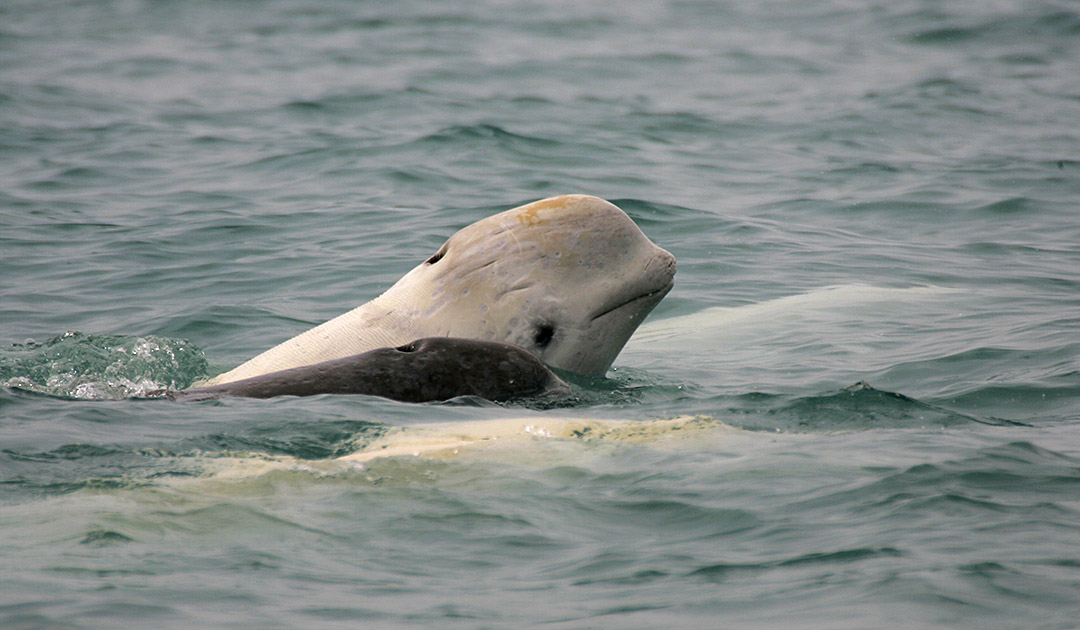
Microplastics ingested by whales, dolphins and seals do not necessarily remain in their digestive tracts or are excreted, but can enter the fatty tissue of various parts of the body or even the lungs, a Duke University research team found in a new study.
Greg Merrill, PhD student at the Duke University Marine Lab and lead author of the study, examined fat and lung tissue samples from 12 species of marine mammals, a total of 32 individuals, for microplastics and found microscopic plastic particles in about two thirds of the samples. His findings show that even in marine mammals, microplastic particles ingested with food are transported from the digestive tract to other organs via various pathways and can become deposited in tissues.
“This is an extra burden on top of everything else they face: climate change, pollution, noise, and now they’re not only ingesting plastic and contending with the big pieces in their stomachs, they’re also being internalised,” Greg Merrill Jr. said in a university press release. “Some proportion of their mass is now plastic.”

Since plastics are attracted to fat, Merrill examined three different types of fatty tissue: the thick subcutaneous fat layer or blubber, the sound-producing melon in the skull, and the fat pads along the lower jaw. He also analyzed lung tissue and detected microplastic particles in all four tissue types.
The study, which will appear in the journal Environmental Pollution in October and has been published online in advance, is the first to demonstrate the translocation of plastic particles in marine mammals. Previous studies in mussels, sea squirts, and several freshwater and marine fish have already demonstrated that microplastics can enter various tissues.
Although Merrill says most of the ingested plastic particles are likely to be excreted, some remain in the body. The pathway of how microplastic particles pass through the intestinal wall, however, is not yet clear. According to the study, particles up to 130 micrometres in size could either be taken up by cells of the intestinal tissue and released back into circulating body fluids or diffuse through channels between neighbouring cells. However, particles found in the study were on average between 198 and 537 micrometres in size, suggesting that the plastic particles were more likely to have left the intestine via small injuries.

How plastic particles embedded in the tissue affect the marine mammals’ metabolism is what Merrill plans to study next. Previous studies suggest that plastics and the chemicals and pollutants that sit in or on the particles can have multiple effects in organisms. These include disruption of hormonal cycles affecting growth, metabolism and early development, changes in genetic makeup and the development of cancer cells. In addition, microplastic particles also pose the risk of mechanical injury to tissue.
All samples were taken from animals that either stranded or were killed by subsistence hunters between 2000 and 2021 in Alaska, California, and North Carolina. The 12 species examined include beluga whales, humpback whales, bearded seals, ringed seals, and Largha seals. However, bearded seals were the only seal to have microplastics detected in their tissues.
With 5,000 microplastic particles per square kilometer on the water surface, microplastic concentrations around Alaska are significantly lower than on the Atlantic side of the Arctic, where values up to 30 times higher have been measured. This is partly due to comparatively narrow inflow from the North Pacific into the Chukchi Sea via the Bering Strait, while ocean currents from the Atlantic can transport plastic and microplastics unimpeded into the eastern Arctic. Still, especially in the samples of beluga whales, all from Alaska, the researchers found plastic particles in the tissues – up to nine particles per sample each in lungs and in the fat pad of the lower jaw, with the individual tissue samples weighing only about 11 and 12 grams, respectively.
The marine mammals usually ingest microplastics indirectly with their prey, which have already stored the particles in their digestive systems or tissues.
“To me, this just underscores the ubiquity of ocean plastics and the scale of this problem,” Merrill said. “Some of these samples date back to 2001. Like, this has been happening for at least 20 years.”
For the traditional indigenous communities, who often still practice subsistence hunting, such a high level of contamination in marine animals can also become a health risk.
Julia Hager, PolarJournal
More about this topic





